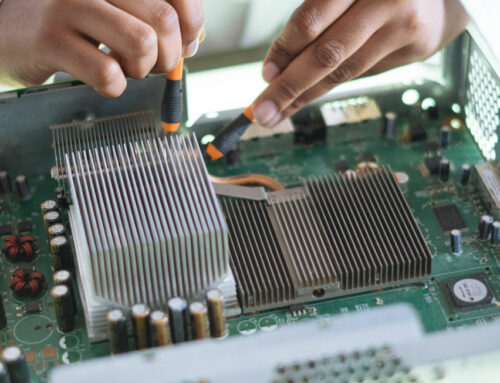While Voice-over-IP (VoIP) telecom systems have been around for years, they still encounter issues from time to time. VoIP systems rely on the internet and are therefore vulnerable to interruption or outage when network issues occur, such as latency, packet loss and jitter.
When you run into issues that take down one of the main ways your business communicates, it’s crucial to get it back up and running as quickly as possible. To help, we’ve put together a list of common VoIP issues and a quick guide for troubleshooting them.
Common VoIP Issues
From choppy audio to dropped calls, many issues can make voice communication a challenge. Here are some of the most common VoIP issues.
Choppy Calls
This can sound like stuttering or short silences that interrupt the person speaking. This is most often caused by network congestion or a bandwidth hogging application on the network.
Echoes or Delays
If there is a hesitation or delay from when someone speaks to when they’re heard, you’re dealing with an audio delay. An echo is when the voice of someone on the line comes back through the audio. While this may be caused by faulty equipment or a bad internet connection, it could also be that the earpiece volume is set too loud or electromagnetic interference.
Crackling or Static
Hearing an intermittent crackling sound or loud static can make a conversation difficult. It may be caused by bandwidth issues, faulty equipment, or a defective power supply.
Compression or Codec Issue
A compression issue or incorrect codec can cause audio distortion. Compression is required for VoIP systems to work, but if the wrong codec is being used or if bandwidth limitations are hampering audio compression, you may experience issues. Try switching to a different codec or looking for network congestion.
Dropped Calls
There is nothing more frustrating than a dropped call. If calls are frequently being dropped, it may be caused by faulty equipment or network congestion.
How to Troubleshoot VoIP Issues
Most VoIP issues can be easily solved, here are a few things to check before you call your ISP or VoIP provider for help.
Check Your Connections
As with internet connection to other devices, one of the first places to look when investigating VoIP issues. Check that all cables are connected to the necessary devices and aren’t crimped or bent, which can cause an internal break to the cable.
Replace Damaged Cables
Any cables that have visible damage should be replaced. This might include damage to the cables themselves, torn or shredded covers, kinks or bends that might indicate an internal break, or frayed ends. Also thoroughly inspect the plastic jack at either end, even a small break can prevent the cable from connecting securely.
Router Reset
As anyone in IT knows, sometimes a simple reset can solve a myriad of problems. Giving your router a fresh start can often fix connectivity issues. Either press the reset button or unplug all the cables, give it at least 30 seconds to reset and then plug the cables back in. Once the router has booted up and reconnected, you can verify whether your issues persist.
Adjust Quality-of-Service Configuration
If resetting your router doesn’t do the trick, checking the Quality-of-Service (QoS) configuration may help identify VoIP connection issues. QoS configurations help your router optimize traffic to prioritize bandwidth for specific tasks, such as voice, video or applications. To ensure your VoIP system has enough bandwidth, set voice as the highest priority.
Use a Dual-band Router
Dual-band routers transmit at 2.4 GHz and 5 GHz frequencies, this means that each band can be assigned to different tasks, helping avoid network congestion. By assigning the faster frequency, 5 GHz, to VoIP traffic, your data will flow with less interference and should improve VoIP performance.
Identify Packet Loss
If your cables and router aren’t the issue, packet loss may be the cause of your choppy calls. The best way to identify packet loss is to do a ping test. A test will check your network speeds, both upload and download, and will analyze how much data is lost.
Choosing the Right VoIP Equipment
If you’re struggling to identify what’s causing your VoIP issue or you need of some new equipment, we’ve put together a guide to the best VoIP phones, or you can contact us and our expert staff will help you find a solution.




